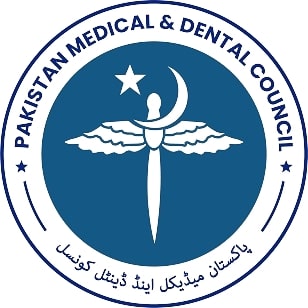EFFICACY OF PLATELET-RICH PLASMA IN TENNIS ELBOW IN PATIENTS PRESENTING IN A PUBLIC SECTOR HOSPITAL: A PROSPECTIVE OBSERVATIONAL STUDY
DOI:
https://doi.org/10.59058/jaimc.v20i3.64Keywords:
Platelet Rich Plasma, Growth factors, Tennis Elbow, Lateral EpicondylitisAbstract
Background: Platelet rich plasma (PRP) is a supra-physiological concentrate of growth factor. It is biologically safe, minimally invasive and low cost injectable technique for tendinopathies. Evidence suggests that PRP contains bioactive protein and growth factor that promote regeneration. Aim of this study is to assess the efficacy of PRP in tennis elbow and to evaluate its impact on pain and functional outcomes.
Methods: It was a prospective observational study in department of orthopedics surgery, Services Hospital Lahore from December 2017 to June 2019. Forty 40 patients with chronic tennis elbow lasting 4-6 months, both males and females with aged between 18-60 years were included. Thirty milliliters of patient's autologous blood was taken from median cubital vein and 6-7ml of platelet rich plasma was injected at the point of maximal tenderness at extensor carpi radialis brevis (ECRB) tendon. Patients were followed at 2 weeks, 6 weeks, 3 months and 6 months. Functional outcomes were assessed at each visit using Oxford Elbow Score, while visual analogue score (VAS) was used to assess pain.
Results: Mean Pre-injection VAS was 8.0 ± 2.01 in all patients. At six months, VAS was 1.06 ±1.90 in 34 patients. In six (15%) patients, VAS did not improve. Pre-injection Oxford Elbow Functional score (OES) was 20.12 ± 4.08 (range:22.2-26.8). After 6 month of injection, among 34 patients, it improved to 72.12 ± 12.25 (range: 42.34-90.52)
Conclusion: PRP is effective in terms of pain and improvement of function of elbow in patients with tennis elbow. It is cost effective, minimally invasive, simple and safe. Although literature shows some controversy of PRP in tendinopathies but still the regenerative medicine has opened a new window for restoration of tendinopathies
References
Cohen MS. Lateral epicondylitis: anatomic relation- ships of Extensors Tendon Origins and implications for Arthroscopic Treatment. J Shoulder Elb surg 2008; 17(6):954-60
Mukesh K, sharma L, Kumar R. Tennis elbow managed by corticosteroid and Platelet rich Plasma (PRP) Int J Med Res 2018; 4(2):230-34
Alves R, Grimalt R. A review of platelet–rich Plasma:history, Biology , mechanism of action and classifi- cation . Skin appendages Disord 2018;4:18-24.
Palacio EP, Schiavett RR. Effects of Platelets plasma in lateral epicondylitis of elbow: a prospective rando- mized controlled trial. Rev Bras Orthop 2016;51(1): 90-5.
Gupta, SK. VenkateshA. autologous platelets rich plasma injection in tennis elbow and planter fasciitis. Current orthopedic practice 2016 ; 17(4) : 405-408
Chan XT. The efficacy of platelet rich plasma for imp- roving pain and functions in lateral epicondylitis: A systematic review and met analysis with risk of Bias Assessment.Arthroscopy.2021 sept; 37(9): 2937-2952.
Degen RM. Epidemiology and disease burden of lateral epicondylitis in USA. Analysis of 85,518 patients. HSSJ 2018;14(1):9-14
Kachanathu SJ, Vellapallil D. pulse Versus continuous Ultrasound therapy: as a management of lateral epicon- dylitis. Innov J Med Health Sci 2013; 3:242-245
Graham H, Mazen S, Bibhas R. platelets rich plasma injections for lateral epicondylitis reduces the need for surgical interventions. J Orthop 2018 ; 15 (1) : 239-241
Kumawat PK. Management of lateral epicondylitis (Tennis elbow) by local infiltration of Platelet rich plasma an outcome study. Int J Res.orthop 2020;6(5): 963-967.
Kemp JA. Platelet rich plasma versus corticosteroid injections for treatment of lateral epicondylitis; a sys- tematic review. IJSPT 2021, 16(3); 597-605.
Tang S, Wang X. Platelet-rich plasma vs autologous blood vs corticosteroid injections in the treatment of lateral epicondylitis; a systematic review pairwise and network meta-analysis of randomized control trails. PMR. 2020; 12 (4): 397-409
Kim CH. Platelet rich plasma injections Vs operative treatment of lateral elbow Tendinitis: a systematic review and met analysis. J Shoulder Elbow Surg 2021; 14 :S1058-2746(21) 00724-2
Paramangntham. Functional outcome of platelets rich plasma (PRP) intra-lesional injections for tennis elbow- Aprospective cohort study. Cerus 2022 ; 14(3); e 22974
Tosun H. Comparison of effects of sodium hyaluronate, chondroitin sulphate and corticosteroid in the treatment of lateral epicondylitis : a prospective randomized trail J Othop Sci 2015: 20(5):837-843
Morrey B, An K, Functional CE. Evaluation of the elbow. In: The elbow and disorders 2nd ed Philadelphia: WB Sanders ; 1993.P.95
Taylor DW, Petera M, Hendry M, Theodoropoulos JS. A systematic review of the use of platelet-rich plasma in sports medicine as a new treatment of tendon and ligament injuries. Clin J Sport Med 2011; 21(4):344-52
HOUCK DA. Treatment of lateral epicondylitis with autologous blood, platelets rich plasma vs corticosteroid injections: a systematic review of overlapping meta- analysis. Orthop J sports med 2019 ; 7(3)
Lim W. Relationship of cytokines levels and clinical effect. Aplatelets rich plasma treated lat epicondylitis. J Orthop Res 2018 Mar;36(3) 913-920
Barati H. The effect of orthosis on treatment of lateral epicondylitis: a systematic Review. JRSR 2019; 6(2): 51-59
Marcus B, Chris L, Amol TA. Surgery for Tennis Elbow; shoulder Elbow 2019 Feb ; 11(1):35-44
Henary Kurian, John George. A comparative study of intralesional PRP Injections versus conventional steroid Injection in the treatment of chronic lateral epicondylitis (Tennis Elbow). Int J Heatlh and Clin Res 2021 ; 4(10) : 122-130
Elham HO. Clinical application platelet rich plasma. Sohag Med J 2019;23(3):186-194
Maffulli G. Extracorporeal shockwave therapy in the treatment of tennis elbow. Muscle Ligament Tendons J 2014; 8(3):423-429
Downloads
Published
How to Cite
Issue
Section
License
Copyright (c) 2023 JAIMC

This work is licensed under a Creative Commons Attribution 4.0 International License.
The articles published in this journal come under creative commons licence Attribution 4.0 International (CC BY 4.0) which allows to copy and redistribute the material in any medium or format Adapt — remix, transform, and build upon the material for any purpose, even commercially under following terms.
-
Attribution — You must give appropriate credit, provide a link to the license, and indicate if changes were made. You may do so in any reasonable manner, but not in any way that suggests the licensor endorses you or your use.
- No additional restrictions — You may not apply legal terms or technological measures that legally restrict others from doing anything the license permits.
The editorial board of the Journal strives hard for the authenticity and accuracy of the material published in the Journal. However, findings and statements are views of the authors and do not necessarily represent views of the Editorial Board. Many software like (Google Maps, Google Earth, Biorender (free version)) restricts the free distribution of materials prepared using these softwares. Therefore, authors are strongly advised to check the license/copyright information of the software used to prepare maps/images. In case of publication of copyright material, the correction will be published in one of the subsequent issues of the Journal, and the authors will bear the printing cost.










